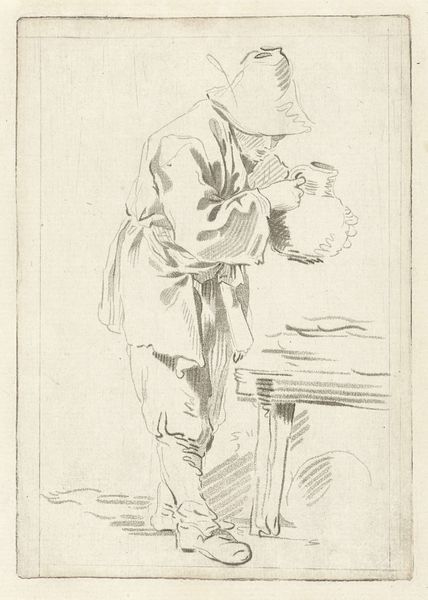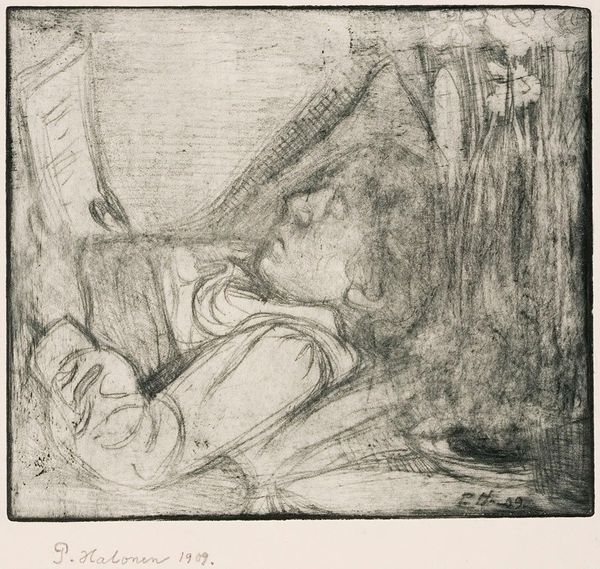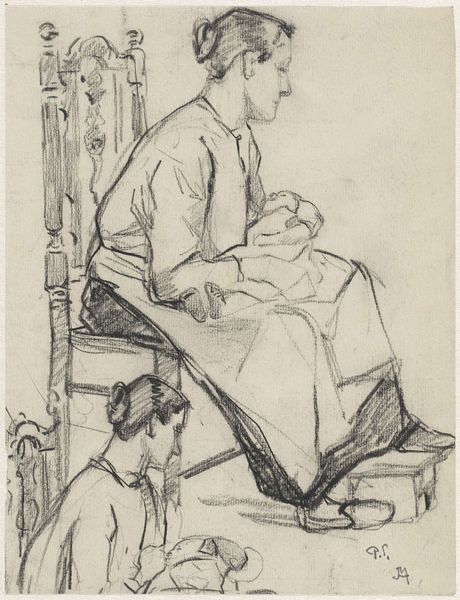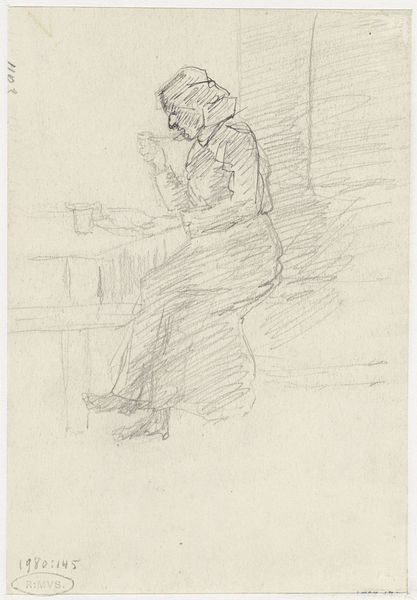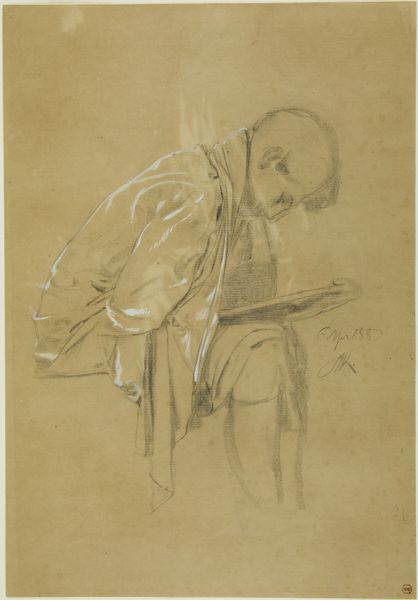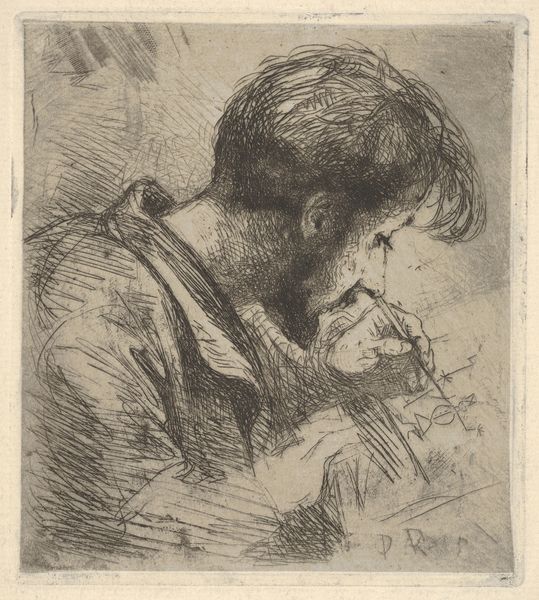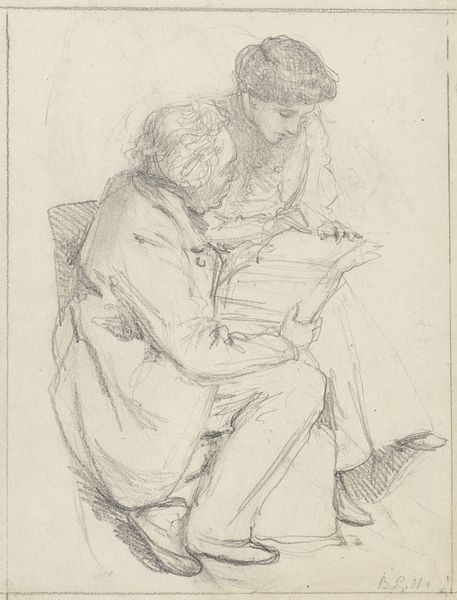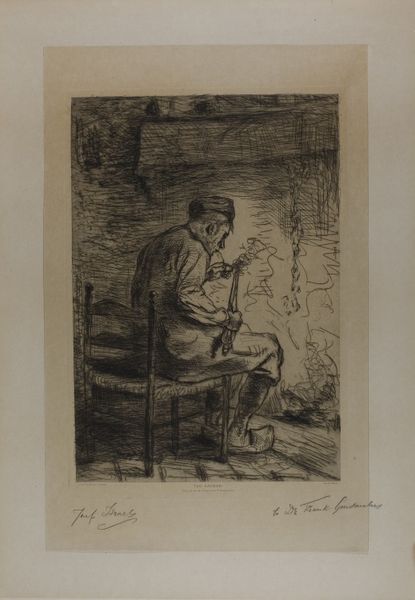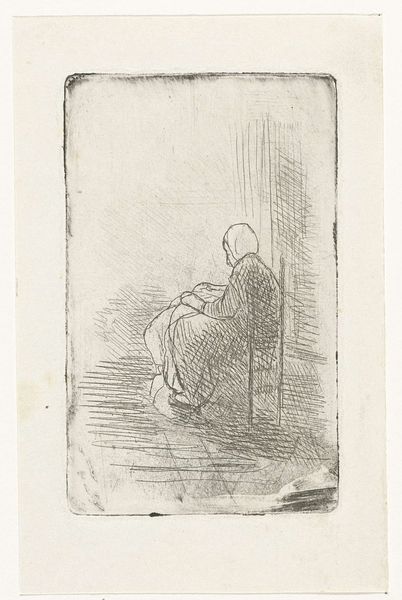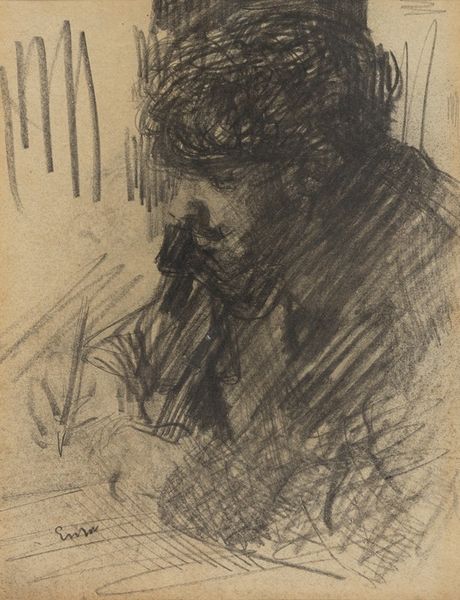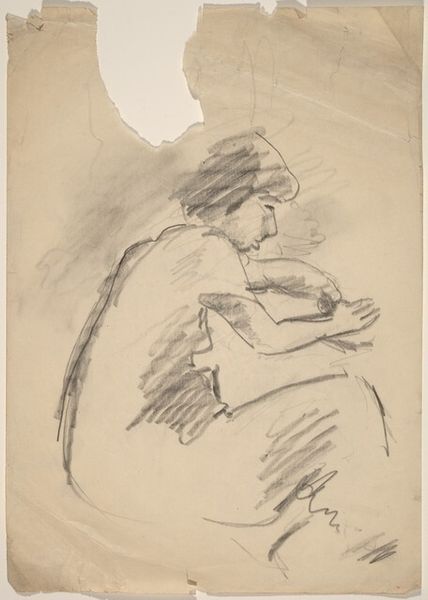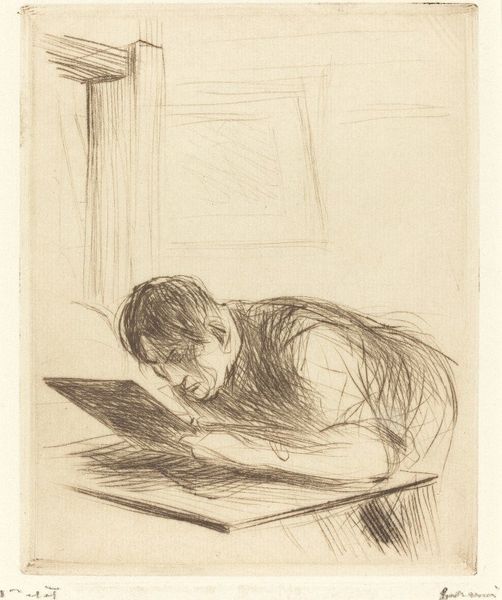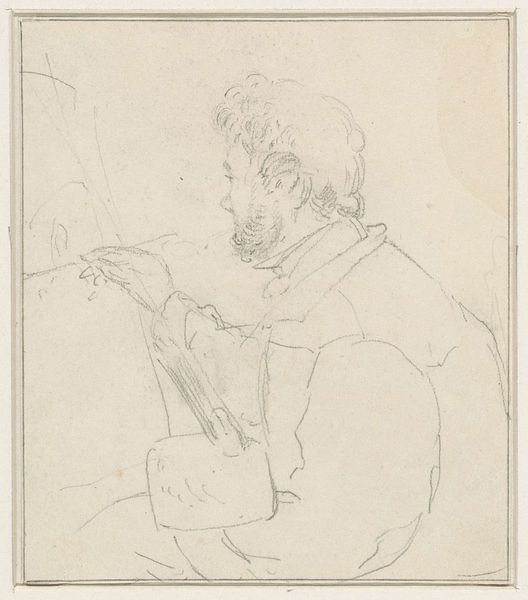
drawing, print, etching
#
portrait
#
drawing
#
ink drawing
# print
#
etching
Dimensions: plate: 25.1 × 17.8 cm (9 7/8 × 7 in.) sheet: 33 × 25.4 cm (13 × 10 in.)
Copyright: National Gallery of Art: CC0 1.0
Editor: We are looking at "John Marin," an etching done in 1912. The portrait feels introspective, almost melancholic, especially with the hunched posture. How would you interpret its composition and technique? Curator: I see an emphasis on line and form above all else. Observe how the etching technique, with its network of fine lines, defines the contours of the figure and creates a sense of volume. Marin’s strategic use of hatching and cross-hatching dictates the light and shadow, conveying depth. Notice also how the lines in the background don’t so much define space, as provide an atmospheric quality, suggesting a mood rather than a location. What compositional choices contribute to this mood? Editor: The muted palette and the seemingly unfinished background? The way the figure occupies most of the frame seems deliberate, focusing all our attention. Curator: Precisely. The absence of vibrant color forces us to engage with the stark structure of the figure, demanding our complete consideration of the lines and their directionality. Consider the deliberate roughness of the marks, their contribution to a broader understanding. Could that evoke an emotion, a feeling about the depicted subject? Editor: I guess I see the angularity of the lines as lending a raw, honest quality to the portrait. Curator: That rawness you observe serves as an aesthetic strategy that prioritizes pure form and structure. Editor: Interesting! Looking at it now, I see how much the visual elements create that mood. I learned a lot from analyzing it through the lens of formalism. Curator: Indeed, by dissecting the formal elements, we begin to access the complex interplay between the artwork’s appearance and its potential meaning.
Comments
No comments
Be the first to comment and join the conversation on the ultimate creative platform.
